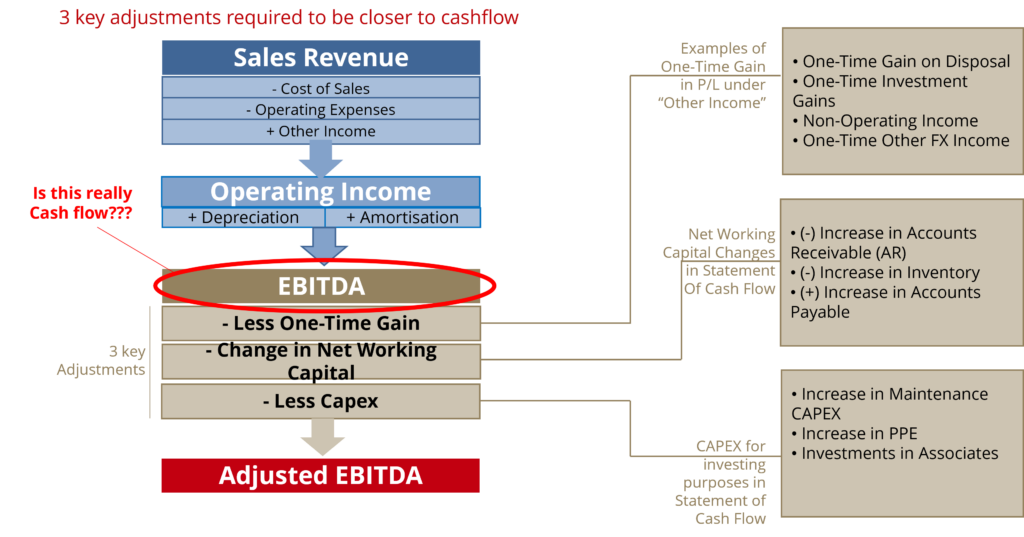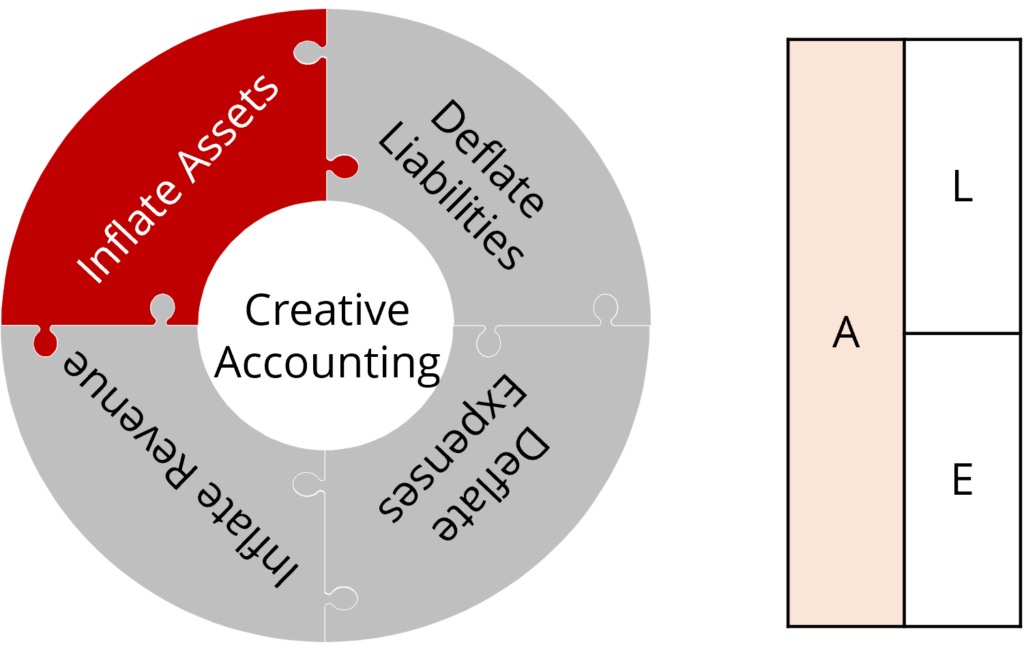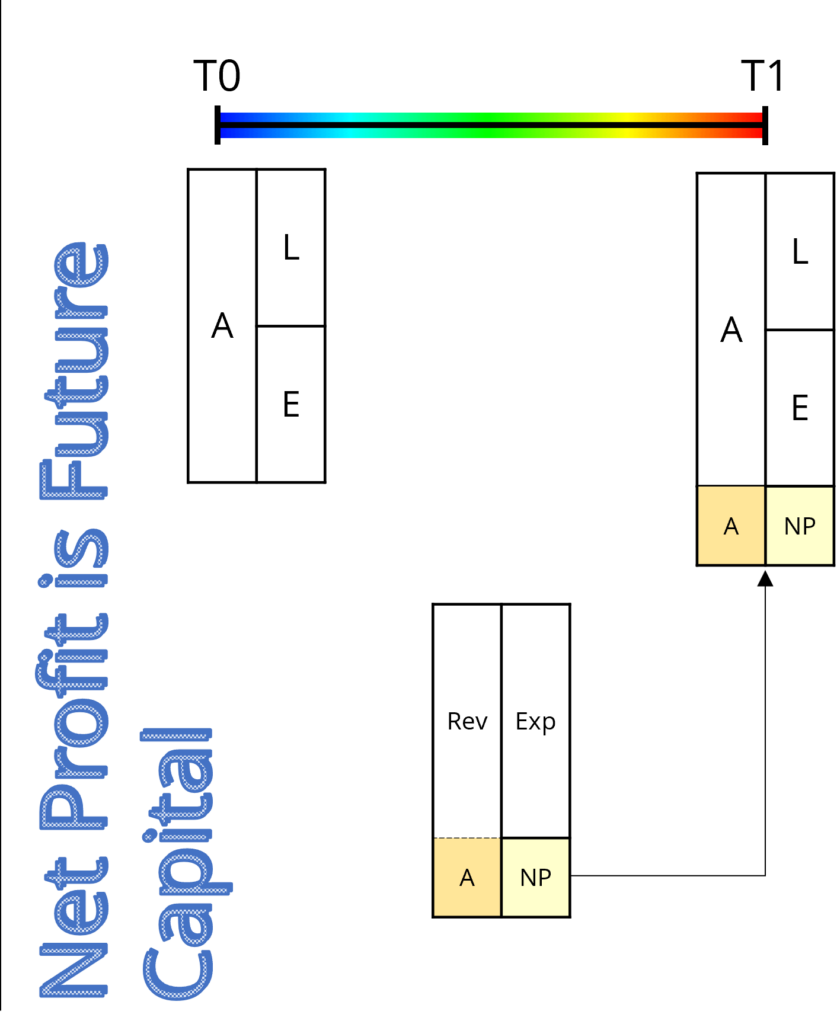EBITDA is NOT cash flow
- EBITDA is used in commonly used ratios such as DSC (EBITDA/CPLTD) and leverage (debt/EBITDA), but it does not capture key items such as interest, taxes, working capital and capital expenditures that affect a company’s cash flow
- EBITDA – Taxes – Increase in NWC – Capex – Other operating investments = Free Cash flow available for debt service
- To calculate DSC,
- Make adjustments to current cash + expected incoming + expected outgoing
- Expected outgoing expenses (how elastic are these expenses. Non- discretionary and inelastic)
- Equity injection (personal equity) – See promoters’ track records in terms of how willing he is to fund
PD Analysis: EBITDA =/= CASHFLOW

Adjustments to Financial Statements
Moody’s adjustments to financial statements
- Defined benefit pensions
- Operating leases (off-BS, only lease expense on P/L)
- Finance leases
- Capitalised interest
- Capitalised development cost –> MOST IMPORTANT
Capex
Planned
– Maintenance (hard to reduce, depends on elasticity)
– Incremental (may be reduced)
Committed
– Timing
– Financial Consequences (break cost)
3 sources of finding out planned and committed capex
– Regulatory requirement for management disclosure
– Analysts own estimates (Eg. taxi companies need to replace after 10 years)
– Ask customer (RM’s call report) - Interest expense related to discounted LT liabilities other than debt
- Hybrid securities
- Securitisation
- Inventory on a LIFO cost basis
- Consistent measurement of funds from operations – different measures of working capital
- Unusual and non-recurring items
- Unusually large transactions (creating revenue, costs or cash flows) that management does not expect to recur in the foreseeable future
- Other analytical non-standard adjustments
** DETERMINE IF THESE ADJUSTMENTS ARE MATERIAL RELATIVE TO EQUITY BUFFER
Why equity buffer? Because it affects D/E ratio which can change the credit rating
Dividends – In Cash VS Shares

The “Ideal” Balance Sheet

- Cash conversion on the asset side is exactly matched with repayment cycle on the liabilities side
- Current ratio is not useful because it ignores maturity mismatches within the 1 year bucket
- Some current assets may have to move down the pyramid
- Eg. Obsolete Inventory, Imparied AR, etc
- Even cash is not always immediately available (eg. cash in different currency or location or units)
- Long term liabilities may come due immediately
- If a ST trade creditor sue, other loans may come due immediately
- Covenant and credit events
- Bullet repayment
What is the adjusted equity buffer?


- Overvalued assets (involving non-market valuation)
- Intangibles (e.g. brands or goodwill)
- Inventory (e.g. biological assets)
- Land and properties (less of a concern in SG)
- Accounts receivables
- RP balances vs. RP transactions (elasticity)
- Island debtors
- Types of concentration risks
- Irretrievable assets (T&C risk)
- Contingent liabilities/ hidden liabilities à more likely to crystallize at declining stage
- Warranty obligations or anticipated litigation loss
- Environmental/ third party claims, e.g. kampong head
- Labour union claims under negotiation
- Operating leases
- Liabilities disguised as equity: substance over form, when is the repayment date?
- Perpetual preference stocks
- Strategic vs. financial investors (e.g. SME – “friend’s investment”)
- Pension obligations (increase discount rate for NPV calculation)




Other Practical Considerations
SME Free flow of capital between natural and legal entity
